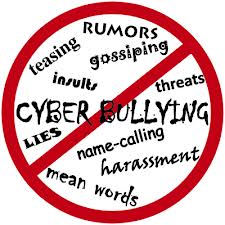Digital Parenting: Raising Kids in the Age of Wi-fi

The last 20 years have provided parents, our government, schools, and law enforcement with a multitude of ways to help keep our kids safe. Medical, manufacturing, and information technologies have advanced in leaps and bounds, yet 43 percent of children have still encountered some type of bullying online, according to Dosomething.org.
The information age has put all of the help a mother could ask for at her fingertips. Is your child sick? There is a website to help you. Do you need a babysitter? There is an online listing for that. Do you want to find a community of parents dealing with the same hardships in child rearing that you are? There is an online forum to help you. Do you need to know where your child is? Send a quick text message to their cell phone.
Despite the countless resources the information age gives us, all is not right in the digital world. Instant communication, online anonymity, and information at the push of a button are just as beneficial to the mischief-makers as they are to the “good guys.” From online bullying to the theft of a child’s identity, the threats to the modern day family are very real.
Cyber Bullying
Cell phones are the primary source of cyber bullying, which is scary considering 80 percent of teens regularly use a cell phone, a statistic pointed out by the Cyber Bullying Research Center. Even more worrisome is the fact only one in ten children will actually report their victimization to a parent or other trusted adult, according to the Harford County Examiner.
Parents must be proactive in their approach to stopping cyber bullying. Though this may sound like a daunting task, a few simple steps will help make significant progress against the threat in terms of both prevention and resolution.
-
Though statistics show that children may be unlikely to report cyber bullying to an adult, parents must make efforts to keep communication lines as clear and open as possible. If your child is willing to discuss his or her problems without fear of reprisal or criticism, you will be more likely to be effective in protecting your child from cyber bullies.
-
Parents should keep a close eye on their children’s involvement in social media. Online communities make it easy for adolescents to communicate in ways that many parents are unaware of. Stay up-to-date on the latest social media, be friends with your children (and their friends) on sites like Facebook or MySpace. Monitor their posts regularly.
-
Make sure your child understands what bullying is to ensure they know it when they see it, as well as to help them avoid participating in it themselves. Set aside some time to discuss the definition of bullying, whether they have seen it, what to do if they experience it, and what to do if they witness it happen to someone else. Great resources to guide these conversations include stopbullying.gov and dosomething.org.
Child Identity Fraud
Though cyber bullying is a significant and scary problem in our culture, even more worrisome for many parents is the idea of a criminal stealing their child’s identity. If you believe it is irrational to fear such an incident, consider this statistic cited by the Identity Theft Assistance Center: 2.5 percent of households in a recent study experienced child identity fraud.
If the statistics above strike fear in your heart, consider them more of a wake up call or call to action than scare tactics. As with bullying, parents can take a few steps to guard their children from identity fraud:
-
Beware of credit offers, bills, or collection notices in your child’s name. These are sure indicators of potential abuse of a name, Social Security number, or an entire identity.
-
Talk to your children about the information they share online. As a rule, they should be avoiding any sites that ask for a minor’s Social Security number, full name, date of birth, or address. If they must put any of this information onto a website, or if anyone online asks for this information, they should discuss it with you first.
-
Keep an eye out for news concerning new information about ID theft. The tactics of thieves are often changing and always evolving.
Several states, companies, communities, and organizations are also working towards fighting these problems. The Federal Trade Commission (FTC) considers the identity theft of children one of its top priorities and is working to pass more legislation to help defeat and prosecute perpetrators. A small group of legitimate companies have sprouted up to assist parents in defending their children’s identities by offering a variety of identity theft protection services.
Organizations have been formed to team up against cyber bullying. 49 states have passed anti-bullying legislation, according to Bullypolice.org. Additional help for parents will be coming as more people become aware of the problems in cyberspace.
To combat these serious problems and protect our children, we must become a true “online village” acting with solidarity against those who wish to do our children harm. Parents working as a cohesive group will be much more effective in defending the well-being of their children’s mental and physical health, and financial futures.
Visit the websites listed in this article, and join up in the conversations in article comments, online forums, and online parent groups. We can protect our children, but we must put in the time, effort, and teamwork to do so.







